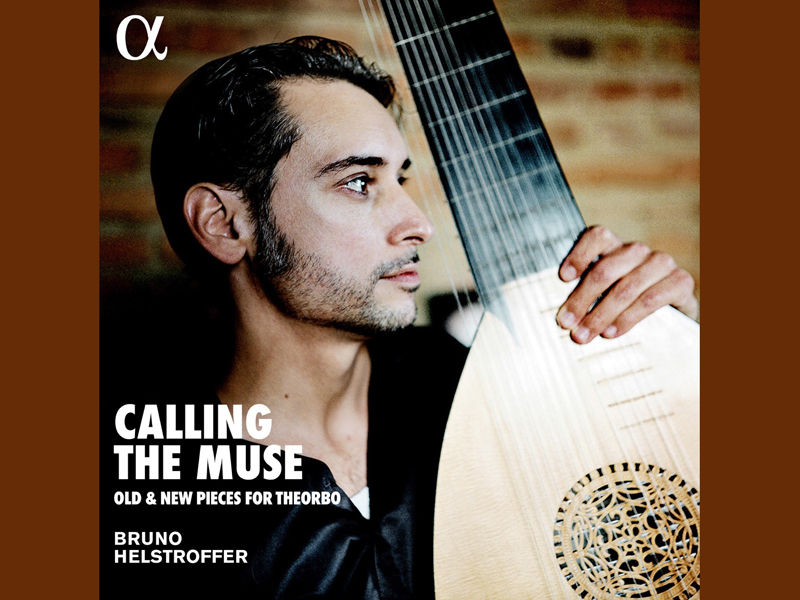Daniele Ruggieri and Alberto Mesirca : Music for Flute and Guitar : CD
- chrisdumigan
- Sep 13, 2022
- 4 min read

GEORGE ROCHBERG: Muse of Fire; Ora Pro Nobis : TERRY RILEY: Cantos Desiertos: MARC RIBOT: Bateau (Gtr solo): OSVALDO GOLIJOV: Fish Tale: CHARLES WUORINEN: Hexadactyl (Gtr solo) : RUTH CRAWFORD SEEGER : Diaphonic Suite( Flute solo) : MARK DELPRIORA: Elegia ( Gtr solo)
Daniele Ruggieri (Flute) and Alberto Mesirca (Guitar)
Brilliant Classics: 95753
The first thirty minutes of this recording is taken up by two pieces from the American Composer George Rochberg. The first nineteen minutes that is Muse of Fire, the title of which come from Shakespeare’s Henry V, and was written for the duo Eliot Fisk and flautist Paula Robinson. Written in 1989, it is in one movement but has many separate sections all very contrasting that range from the opening atonality where the guitar is almost grunting whilst the flute shrieks its pain at the top of the musical scale, to the section with lovely melodies and harmonies, completely opposite to the opening in style. The piece is so different from anything I have come across before that all I can say is, if you don’t know the work, look it up! His other work Ora Pro Nobis (sub-titled Nach Bach II) begins very much in the style and period of the baroque and inded spends a great deal of the time in that manner, but then towards the very end , suddenly adopts a completely different outlook, and everything suddenly turns completely modern.
Terry Riley’s Cantos Desiertos is in five movements, beginning with Francesco en Paraiso, very Latin – influenced and everything very fast and with the flute really moving around the notes at top speed. Cancion Desierto starts with a kind of motto on the flute as a solo that continues when the guitar enters a little time later. There are moments in the movement when the mood darkens and the guitar has some very mournful music to play while the flute plays long note values above, but always returning to the motto theme. Quijote is very stop – start in style with almost as many rests in the score as there are notes, and is quirky throughout. Llanto is the slowest movement, and starts very dark and gloomy on the guitar before the flute catches the same mood and plays long- held notes atop the guitars grumbling chords. The mood never lightens, until the final movement Tango Ladeado enters. It is very rhythmic but with a modern set of harmonies that make for a slightly unusual listen at first. Everything closes on a high long note on the flute with a complex chord underneath on the guitar.
American composer Marc Ribot’s guitar solo Bateau is alternately haunting and then very fast moving with some wonderfully complex arpeggio writing , and is a lovely work from a composer I haven’t come across before.
Fish Tale (no doubt a play on words!?!) by Osvaldo Golijov , an Argentinean composer was written in 1998 and tells the story of a fish’s very eventful trip through a number of happenings , and as the composer states, he wanted everything to sound beautiful, and to be played with passion and imagination, which it certainly is here. The piece is beautiful and always melodic but in a completely unique way that really does succeed in telling a wonderful tale.
Charles Wuorinen’s Hexadactyl , a guitar solo, is by contrast extremely dissonant and at 2 minutes 26 seconds in length , is in my humble opinion, 2 minutes 25 seconds too long, but you might think entirely differently.
By contrast Ruth Crawford Seeger’s 4 – movement flute solo Diaphonic Suite is the oldest piece in the recital written in 1930, and coming from a set of four suites, all from 1930 , No1 ( this one ) for flute or oboe, No2 for bassoon and cello , or two cellos, No3 for two clarinets, and finally No4 for oboe ( or viola) and cello .The musical style is unusual , tonal but with unexpected leaps in melody and as a result, the pieces continuously leap up and down , sounding enigmatic. The opening is a Scherzando, followed by an Andante. The third movement Allegro is very fast, with an almost continuous run of small notes, almost without a break, whilst the final Moderato Ritmico is musically in the same vein as the previous three movements, therefore not almost but not quite atonal. The playing is astonishing and although I have never heard of this composer, if her style appeals then you will find this a captivating quartet of pieces.
Mark Delpriora’s Elegia is a guitar solo , and the final piece on the recording. It begins sadly but then has some mordents in the upper register that sound almost bird – song like. This short piece finishes in the same manner it began, with a very sombre close.
So as you can see, the musical styles here are often modern, and occasionally extremely so, and as nearly all of this material will be new to the greater majority of you, it is all in the end down to how modern you like your music. As for the performers, they do a fabulous job and are first – rate players throughout this set.
Chris Dumigan




Comments